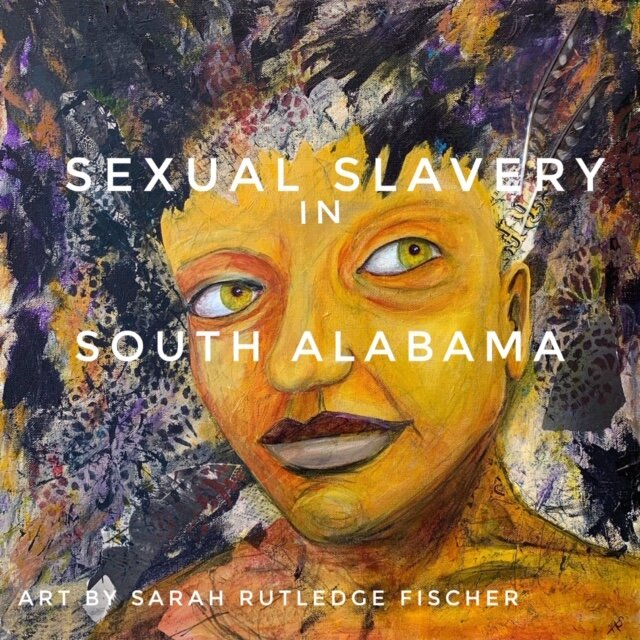1954
1954. Ten years after D-Day and the invasion of Normandy. Ten years before Freedom Summer and the British invasion.
I learned about 1954 after picking that year and reading headlines from the front page of every edition, from January through December, of The Clarion-Ledger, a Mississippi newspaper my family once owned. I dreamed of writing and seeing my stories in print, but the paper was sold when I was 12 years old. I have memories of the stairs to the newsroom, the printing press, and my grandfather’s wood-paneled office, but none about reporters or the words they wrote each day. Finding every edition of The Clarion-Ledger in an online archives helped me understand my family’s evolving voice in the stories they left behind.
1954 began with the United States in the Cold War. Americans feared and fought the spread of Communism overseas and at home. We searched for Communists among our celebrities, politicians, friends and neighbors. The headlines told of Commies, red scares and atomic bombs. And segregation. Crises around the world threatened peace, but the bigger dangers were within ourselves as the South clung to the Jim Crow laws of “separate but equal.”
The year saw the end of two “befores.”
Before integration. Until 1954, black and white children attended separate schools. During the first months of the year Mississippi’s legislature prepared to fund separate school systems, attempting to appear fair to all students without mixing the races.
Before Elvis. The teenager from Tupelo, MS was not mentioned on the front pages of The Clarion-Ledger that year. Recently graduated from high school, he was driving a truck for Crown Electric Company in Memphis, TN. I learned on a tour of Sun Studios that 19-year-old Elvis cut his first record there in July of 1954. He didn’t drive that truck around Memphis much longer.
The South was soon shaken by both.
One of The Clarion-Ledger’s biggest headlines was on May 18, 1954: "State Seeks Answer To Adverse Ruling on School Segregation." The Supreme Court unanimously ruled in Brown v. Board of Education that segregation was unconstitutional and segregated schools were “inherently unequal.”
Later headlines told of the swift shift to desegregation beyond education: "Segregation Out in Apartments, Says FHA;” "Quick Elimination of Segregation is NAACP's Objective;" “Negros Plan Peaceful Invasion of Golf Links.” In “Train Segregation Blasted by NAACP,” the NAACP contended “separation in transportation was legally out of date in light of the Supreme Court ban on school segregation.”
As the South reacted to the Supreme Court’s ruling, Elvis recorded his first single, Arthur Crudup's blues tune, "That’s All Right," at Sun Studio on July 5. Our tour guide stood on the taped X where Elvis stood, and said it was a frustrating day of recording country songs that went nowhere until Elvis sang the blues tune while fooling around on a break. Producer Sam Phillips dashed from the recording booth into the studio and told Elvis to play it again. The song was recorded in two takes, and rockabilly was born. Carl Perkins and Jerry Lee Lewis were also signed to Sun Records that year.
The historic marker in front of the studio reads, "In July 1954, Sun Records released Elvis Presley's first recording. That record, and the tour that followed, changed popular music. Generations of musicians have been affected by those who recorded here. Especially by the music Elvis Presley first sang at Sun Records."
Elvis was my mama’s favorite singer. In the late ‘50s, my dad attended “Jailhouse Rock” parties at Mississippi State where students wore prison uniforms borrowed from Parchman Farm, the oldest and toughest prison in Mississippi.
But changing minds, beliefs and politics in the South took much longer than changing the music. Feelings about desegregation in Mississippi were reflected in the headlines of August 1954, as “House Adopts Proposal to Allow Abolishment of Public Schools” and “Whites Organize to Assure Segregated System in Schools. 'Force' Hinted if Persuasion is Unsuccessful.” The story read, “White men who want to keep segregation in force are banding into ‘citizens' councils’ throughout Mississippi. These men want to persuade first, but are determined to use force if necessary. One said 'a few killings' would be the best thing for the state just before the people vote on a proposed constitutional amendment empowering the legislature to abolish public schools.”
December headlines previewed the struggle for civil rights. “NAACP Promises Fight on Councils Using the Weapon of Economic Pressure,” and, “Mississippians voted to OK School Amendment by 21/2 to 1 Margin.” The story read, “Mississippi voters approved stand-by powers for the legislature in the drive to maintain segregated schools, approving abolition of public schools as a strictly last-resort measure in such a drive. Opponents argue that the amendment is not necessary now that other methods can prevent mixing of Negro and white children for 10-20 years.”
As 1954 turned into 1955, integration and Elvis exploded into bigger movements that were more than a Supreme Court ruling and songs from a small-town boy.
In the months after 1954, 14-year-old Emmett Till was accused of whistling at a white woman and was mutilated, murdered and sunk in the Tallahatchie River in Money, MS. A few months later, Rosa Parks refused to give up her seat on the bus in Montgomery, AL. Dr. Martin Luther King Jr., the 26-year-old pastor at Dexter Street Baptist Church in Montgomery, was elected to lead the Montgomery bus boycott. These events in 1955 marked the beginning of the civil rights movement.
Rock ‘n’ roll began with the music and influences Elvis brought to the surface -- everything from country and western to rhythm and blues. In 1955, black performers such as Chuck Berry quickly crossed racial lines. Fats Domino and Johnny Cash also had their first hit songs. The rules of segregation that pushed white and black people apart did not apply to the music that brought them together.
Mississippi and much of the South avoided mixing students for 16 more years until they were forced by the Supreme Court to desegregate in 1970. During that time, Elvis became “The King of Rock and Roll” with 14 number one records. He died in 1976, six years after school integration.
In my office hangs, “A Message for The New Year,” from an editorial The Clarion-Ledger ran on December 31, 1968. It reminds me of the love of storytelling and passion for the printed word that I inherited from my family, even if I didn't learn these directly from them.
“Man’s greatest source of enlightenment lies in the printed word. It alone passes from generation to generation the sum of mankind’s knowledge and experience. You can watch the rise and fall of civilizations, the ebb and flow of mighty battles and the changing pattern of life through the ages. Through printing you can orient your life to the world you live in, for printing links the past, the present, and the future.”
Reading archived newspapers from The Clarion-Ledger and listening to the music of my parents’ generation helped explain a little more about my family and the changing patterns and opinions of life in the South. There are lessons in the fear, culture and beliefs of the past that shouldn’t be forgotten, re-lived or repeated today. Nor should they be ignored.
1954 gave us integration and Elvis. Change and enlightenment can be good.






